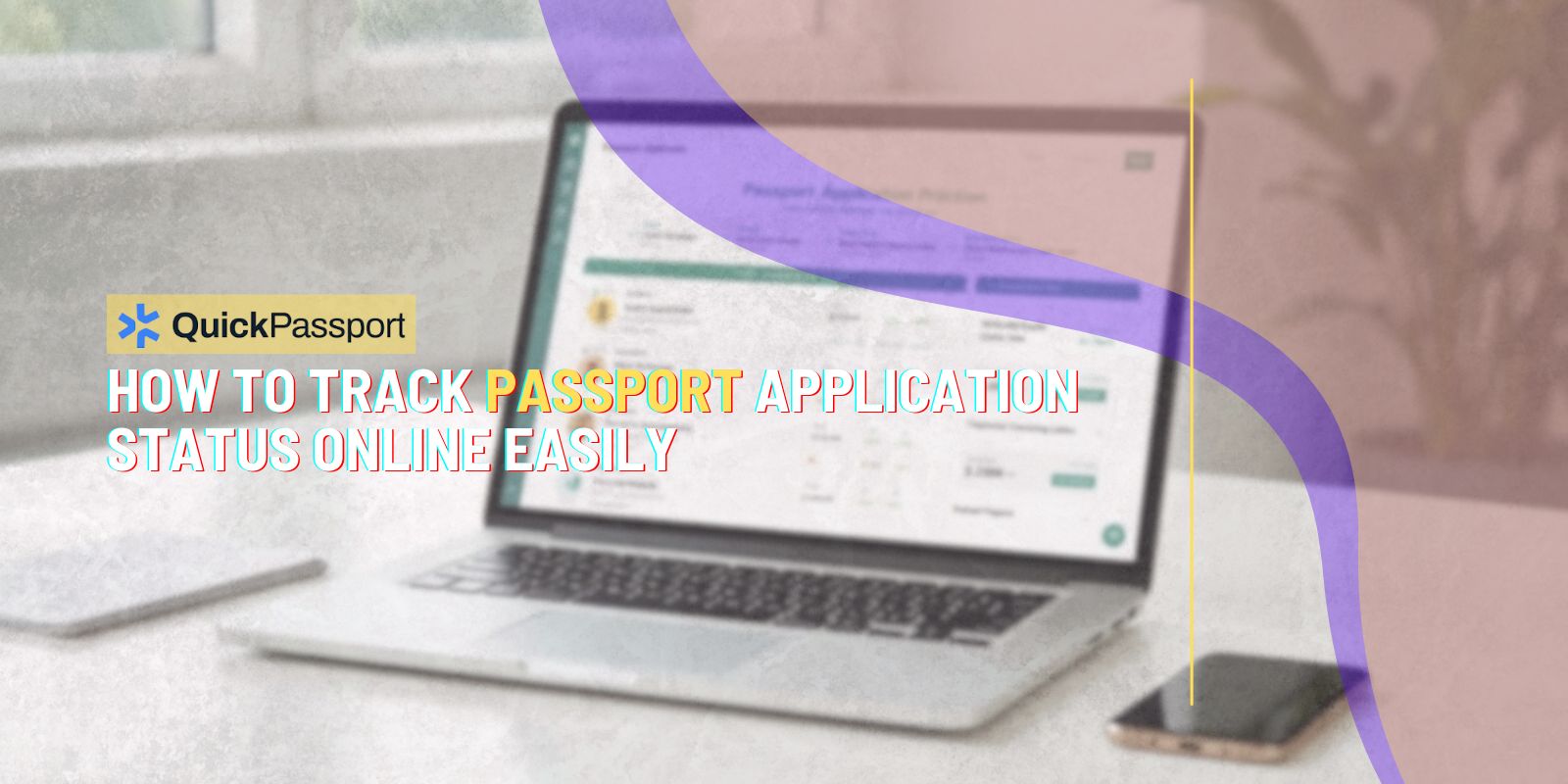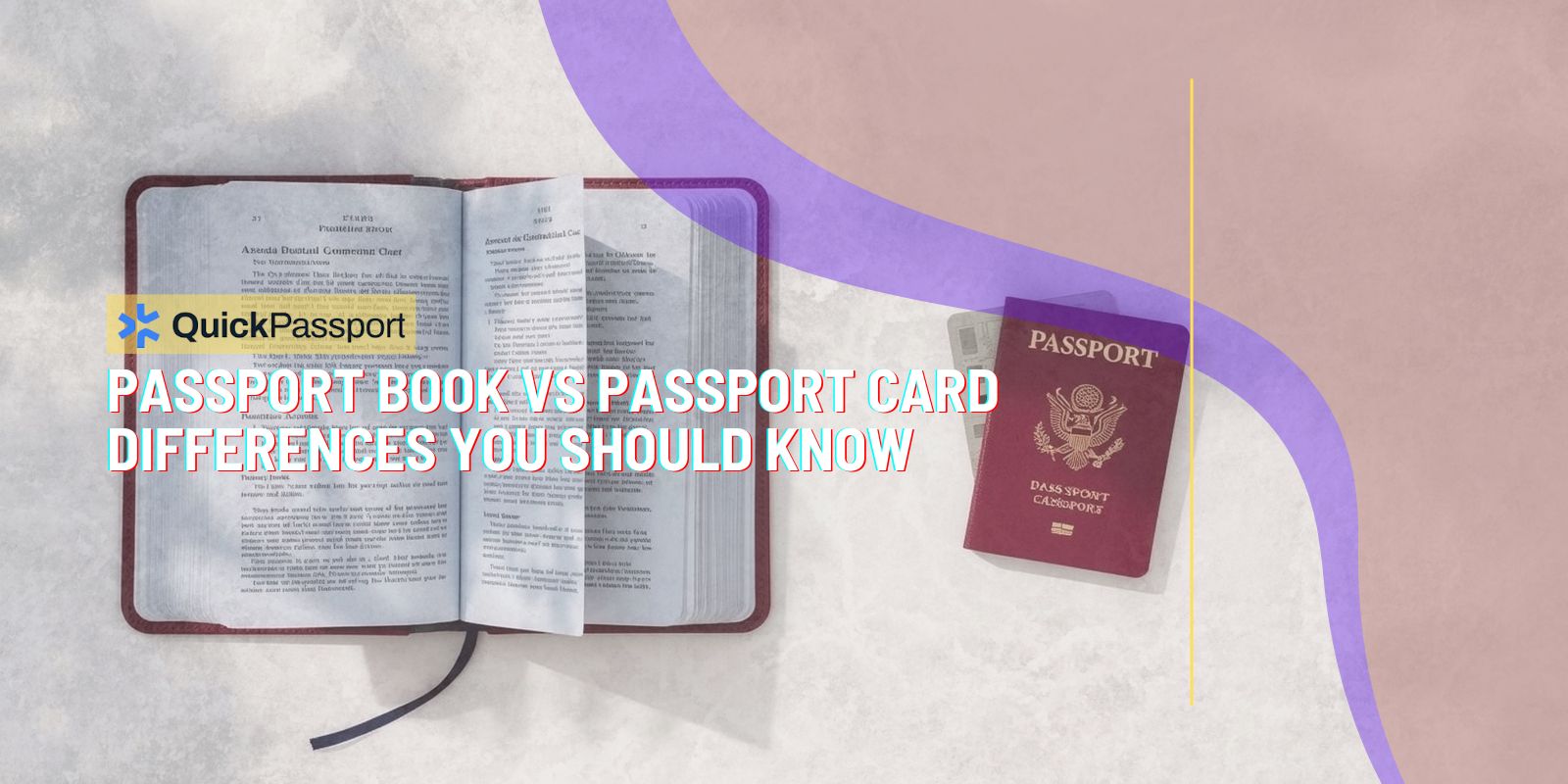When planning international travel, one of the most important decisions you’ll make is choosing between a passport book and a passport card. Understanding the passport book vs passport card differences can save you time, money, and potential travel complications. Both documents serve as proof of U.S. citizenship and identity, but they have distinct limitations and advantages that make them suitable for different types of travel.
The choice between these two travel documents isn’t just about cost—it’s about understanding your travel patterns, destinations, and future plans. While a passport card might seem like an attractive budget-friendly option for certain types of travel, the passport book benefits often make it the more versatile and practical choice for most travelers.
Many travelers make the mistake of choosing a passport card without fully understanding its limitations, only to discover later that they need to upgrade to a passport book for their planned trips. This decision becomes even more critical when you consider that processing times for passport applications can extend for several weeks or even months during peak travel seasons.
Whether you’re a first-time passport applicant or looking to renew your existing travel document, understanding these differences will help you make an informed decision. The distinction goes beyond just physical appearance—it encompasses where you can travel, how you can travel, and what opportunities each document opens or closes for your future adventures.
At QuickPassport – Miami, we help travelers navigate these important decisions daily, ensuring they choose the right travel document for their specific needs. Our experience has shown that while both options have their place, understanding the full scope of differences is crucial for making the right choice for your travel lifestyle.
Key Takeaways
- Travel Scope: Passport books allow international air travel to any destination, while passport cards are limited to land and sea travel to Canada, Mexico, the Caribbean, and Bermuda only
- Cost Difference: Passport cards cost significantly less than passport books, making them attractive for budget-conscious travelers with limited travel plans
- Size and Convenience: Passport cards are wallet-sized and more convenient for frequent border crossings, while passport books are larger but accommodate visa stamps
- RFID Technology: Both documents contain RFID chips for enhanced security, but passport books offer additional security features throughout their pages
- Visa Compatibility: Only passport books can accommodate foreign visa stamps and endorsements, making them essential for travel to countries requiring visas
- Processing Times: Both documents typically have similar processing times, though expedited services are available for both options
- Validity Period: Both adult passport books and cards are valid for 10 years, while minor versions are valid for 5 years
- Future Flexibility: Passport books provide maximum flexibility for spontaneous travel opportunities, while passport cards limit your options to specific regions and transportation methods
Understanding Passport Documents: An Overview
The United States offers two primary passport options for its citizens: the traditional passport book and the more recent passport card. Both documents were created to meet different travel needs and comply with the Western Hemisphere Travel Initiative (WHTI), which established new requirements for travel documentation between the United States and neighboring countries.
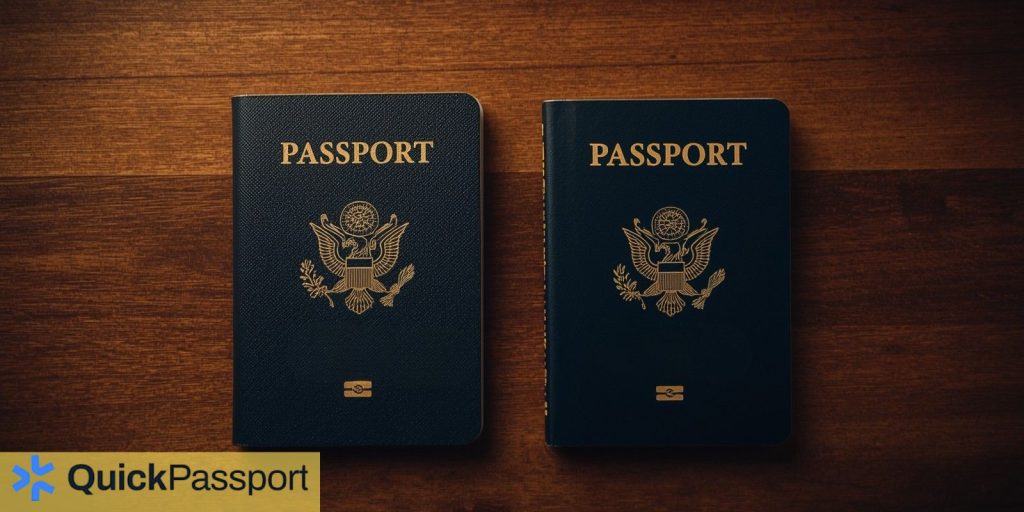
The passport book has been the standard travel document for decades, serving as the gold standard for international travel. It’s a booklet containing multiple pages for entry and exit stamps, visa attachments, and other travel endorsements. This document opens doors to virtually every country in the world, provided you meet other entry requirements such as visas or health documentation.
The passport card, introduced in 2008, was designed as a more convenient and cost-effective option for frequent travelers to neighboring countries. It’s roughly the size of a driver’s license and fits easily in a wallet, making it ideal for those who regularly cross borders by land or sea. However, this convenience comes with significant limitations that many travelers don’t fully understand until they need to book that first international flight.
Both documents serve as proof of U.S. citizenship and identity, containing similar personal information and security features. They both include RFID technology that allows for faster processing at border crossings and enhanced security verification. The key differences lie not in what they prove about your citizenship, but in how and where you can use them for travel.
Passport Book: Comprehensive Travel Freedom
The passport book represents the ultimate in travel flexibility and international recognition. This traditional document consists of multiple pages bound in a distinctive blue cover, providing space for entry and exit stamps from countries around the world. When considering passport book benefits, the most significant advantage is its universal acceptance for international air travel to any destination worldwide.
One of the most important features of a passport book is its ability to accommodate foreign visas. Many countries require U.S. citizens to obtain visas before entry, and these visas are typically affixed as stickers or stamps within the passport book’s pages. Countries like China, Russia, India, and many African and Asian nations require visas that simply cannot be accommodated by a passport card. This makes the passport book essential for travelers with diverse international interests.
The passport book also serves as a comprehensive travel record. Each entry and exit stamp tells the story of your travels, which can be important for various purposes including future visa applications, business travel documentation, or personal record-keeping. Some countries even require evidence of previous travel experience for certain types of visas, making your passport book a valuable historical document.
From a practical standpoint, passport books offer peace of mind for travelers who may not know exactly where their adventures will take them. Whether you’re planning a European vacation that might extend to Asia, or a business trip that could lead to unexpected opportunities in new countries, having a passport book ensures you’re prepared for any destination. The flexibility to book international flights on short notice can be invaluable for both business and leisure travelers.
Security features in passport books are also more comprehensive. Beyond the RFID chip, passport books contain multiple security elements throughout their pages, including special papers, inks, and printing techniques that make them extremely difficult to counterfeit. This enhanced security is recognized and trusted by immigration officials worldwide.
Passport Card: Limited but Convenient Option
The passport card serves a specific niche in the travel document ecosystem, designed primarily for frequent border crossers who travel exclusively by land or sea to neighboring countries. Understanding the passport book vs passport card differences becomes crucial when evaluating whether this limited option meets your travel needs.
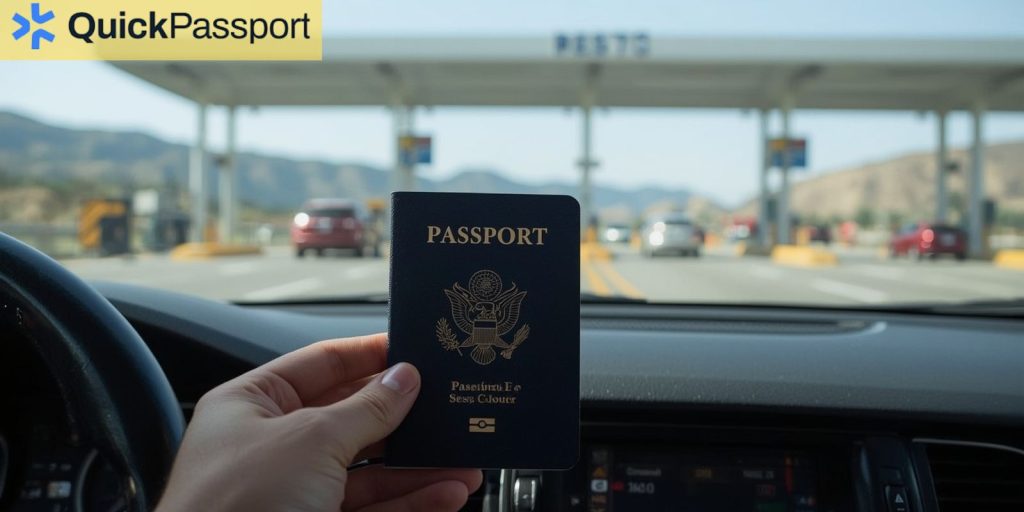
Geographically, passport cards are accepted for travel only to Canada, Mexico, the Caribbean, and Bermuda. This restriction might seem reasonable for many Americans, especially those living near the Canadian or Mexican borders who make frequent trips for business, shopping, or visiting family. The card’s wallet-friendly size makes it incredibly convenient for these regular crossings, eliminating the need to carry the larger passport book.
The cost advantage of passport cards is significant, typically costing about half the price of a passport book. For families with multiple children or individuals on tight budgets who only travel to neighboring countries, this cost savings can be substantial. However, this initial savings can become a liability if travel plans change or unexpected opportunities arise.
Transportation limitations represent the most significant restriction of passport cards. Even if you’re traveling to an approved destination like Mexico or Canada, you cannot use a passport card for air travel. This means that even a flight from Miami to Cancun—a short international flight to an approved destination—would require a passport book, not a passport card. This limitation often surprises travelers who assume they can use their passport card for any travel to approved countries.
The processing and security features of passport cards are similar to passport books, including RFID technology and robust anti-counterfeiting measures. However, the card format cannot accommodate visa stamps or endorsements, which limits future travel options even to countries that might accept passport cards for entry but require visas for certain types of visits or extended stays.
Cost Analysis and Value Considerations
When examining the financial aspects of the passport book vs passport card differences, the initial cost comparison reveals a significant price gap that influences many travelers’ decisions. As of current pricing, a passport card costs considerably less than a passport book, making it an attractive option for budget-conscious travelers. However, a comprehensive cost analysis must consider long-term value and potential additional expenses.
The upfront savings of choosing a passport card can be misleading when you factor in the potential need to upgrade later. If your travel plans change or opportunities arise that require a passport book, you’ll need to apply for a new document entirely. The passport card cannot be “upgraded” to a passport book—you must go through the complete application process again, including paying full fees, providing new documentation, and waiting for processing.
For families, the cost considerations become more complex. While choosing passport cards for multiple family members can result in substantial initial savings, it also means the entire family is limited to the same travel restrictions. If even one family member needs to travel internationally by air, the entire family might need passport books to travel together, effectively doubling the documentation costs.
Processing fees and expedited service costs are similar for both documents, so there’s no advantage to choosing a passport card if you need quick processing. Additionally, both documents have the same validity periods—10 years for adults and 5 years for minors—so the annual cost difference becomes less significant when calculated over the document’s lifetime.
The hidden costs of choosing a passport card often emerge in missed opportunities. Last-minute travel deals, business opportunities, or family emergencies that require international air travel become impossible with only a passport card. The inconvenience and additional costs of alternative transportation methods (such as driving to Canada instead of flying) can quickly exceed the initial savings from choosing a passport card.
Travel insurance and other travel-related services sometimes offer different rates or coverage based on your travel document type, as passport books indicate a broader range of potential travel destinations. This factor, while minor, can contribute to the overall cost equation for frequent travelers.
Travel Scenarios and Practical Applications
Understanding real-world travel scenarios helps illuminate the practical implications of choosing between these two documents. The passport book benefits become most apparent when examining diverse travel situations that modern travelers commonly encounter.
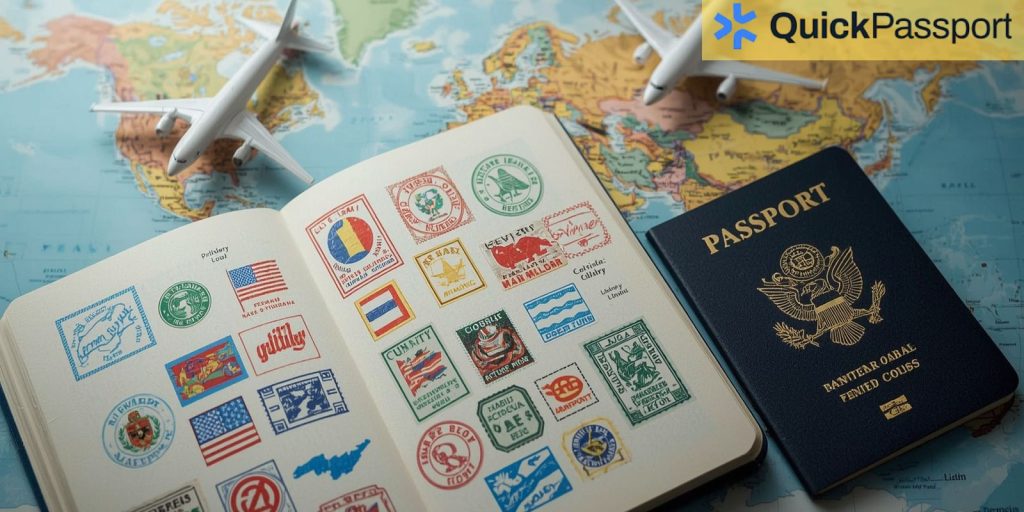
Business travelers often face unpredictable itinerary changes and international opportunities. A sales professional might plan a trip to Toronto using a passport card, only to discover that their company wants them to continue to London for an additional meeting. With a passport card, this scenario would require returning home to obtain a passport book before continuing to Europe, causing significant delays and additional costs.
Family vacation scenarios present their own challenges. A family planning a cruise to the Caribbean might initially consider passport cards since the ship travels by sea to approved destinations. However, if a family member becomes ill and needs to fly home early, or if the ship experiences mechanical problems requiring passengers to fly home from a foreign port, passport cards would be insufficient for air travel back to the United States.
Educational travel and study abroad programs almost universally require passport books. Students planning to study in approved passport card destinations like certain Caribbean institutions often discover they need passport books for the program’s international components or for travel during breaks. Many educational programs also include travel to multiple countries, making passport books essential.
Emergency travel situations highlight another critical difference. Family emergencies, natural disasters, or political situations might require immediate evacuation by air from any international location. Having a passport book ensures you have maximum flexibility in emergency situations, while a passport card could leave you stranded if air travel becomes necessary.
Frequent border crossers, such as those living near the Canadian or Mexican borders, might seem like ideal passport card candidates. However, many of these travelers eventually find value in having both documents—using the convenient passport card for regular crossings while maintaining a passport book for occasional international air travel or unexpected opportunities.
At QuickPassport – Miami, we’ve seen countless travelers who initially chose passport cards return to upgrade to passport books when their travel horizons expanded. The decision often comes down to whether you want to optimize for current known travel plans or maintain flexibility for future unknown opportunities.
Frequently Asked Questions
Can I upgrade my passport card to a passport book later?
No, you cannot upgrade a passport card to a passport book. If you have a passport card and need a passport book, you must apply for a completely new passport book, paying full fees and going through the entire application process again.
Can I have both a passport book and a passport card at the same time?
Yes, you can hold both documents simultaneously. Many frequent travelers to neighboring countries choose this option, using the convenient passport card for regular border crossings and the passport book for international air travel.
Which document is faster to process?
Both passport books and passport cards have similar processing times. Standard processing typically takes 6-8 weeks for both documents, while expedited processing reduces this to 2-3 weeks for an additional fee.
Can I use a passport card for domestic flights within the United States?
Yes, passport cards are accepted as valid identification for domestic flights within the United States, just like passport books. Both documents meet TSA requirements for domestic air travel.
Do children need the same type of passport document as their parents?
Not necessarily, but it’s often practical for family members to have the same type of document to ensure everyone can travel together. If parents have passport books but children have passport cards, the family cannot travel together internationally by air.
Are there any countries where a passport card is preferred over a passport book?
No, there are no countries where a passport card is preferred over a passport book. Passport books are accepted everywhere that passport cards are accepted, but not vice versa.
What happens if I’m traveling with a passport card and need to fly internationally due to an emergency?
In emergency situations, you would need to contact the nearest U.S. embassy or consulate, which might be able to issue emergency travel documents. However, this process can be time-consuming and stressful during an emergency.
Can I use a passport card for cruise travel to any destination?
Passport cards are only valid for closed-loop cruises (those that begin and end at the same U.S. port) to Canada, Mexico, the Caribbean, and Bermuda. They cannot be used for cruises to other destinations or one-way cruise travel.
Making the Right Choice for Your Travel Future
The decision between a passport book and passport card ultimately comes down to balancing current needs with future flexibility. While the cost savings of a passport card might be appealing, the passport book benefits typically outweigh the additional expense for most travelers. The comprehensive travel freedom, visa compatibility, and emergency flexibility that passport books provide make them the superior choice for anyone who values keeping their options open.
Consider your travel personality and lifestyle when making this decision. If you’re someone who enjoys spontaneous adventures, values travel flexibility, or has any interest in exploring destinations beyond the immediate neighboring countries, a passport book is the clear choice. The small additional investment pays dividends in peace of mind and opportunity access.
For the minority of travelers who genuinely never plan to travel internationally by air and are certain their travel will remain limited to land and sea travel to Canada, Mexico, the Caribbean, and Bermuda, a passport card might suffice. However, even these travelers should carefully consider whether the savings justify the limitations, especially given the 10-year validity period of these documents.
At QuickPassport – Miami, we recommend that most travelers choose passport books unless they have very specific and limited travel needs that they’re certain won’t change over the next decade. The additional cost is modest when spread over the document’s 10-year validity, and the peace of mind and flexibility are invaluable. Remember, it’s better to have travel options you don’t use than to need travel options you don’t have.


